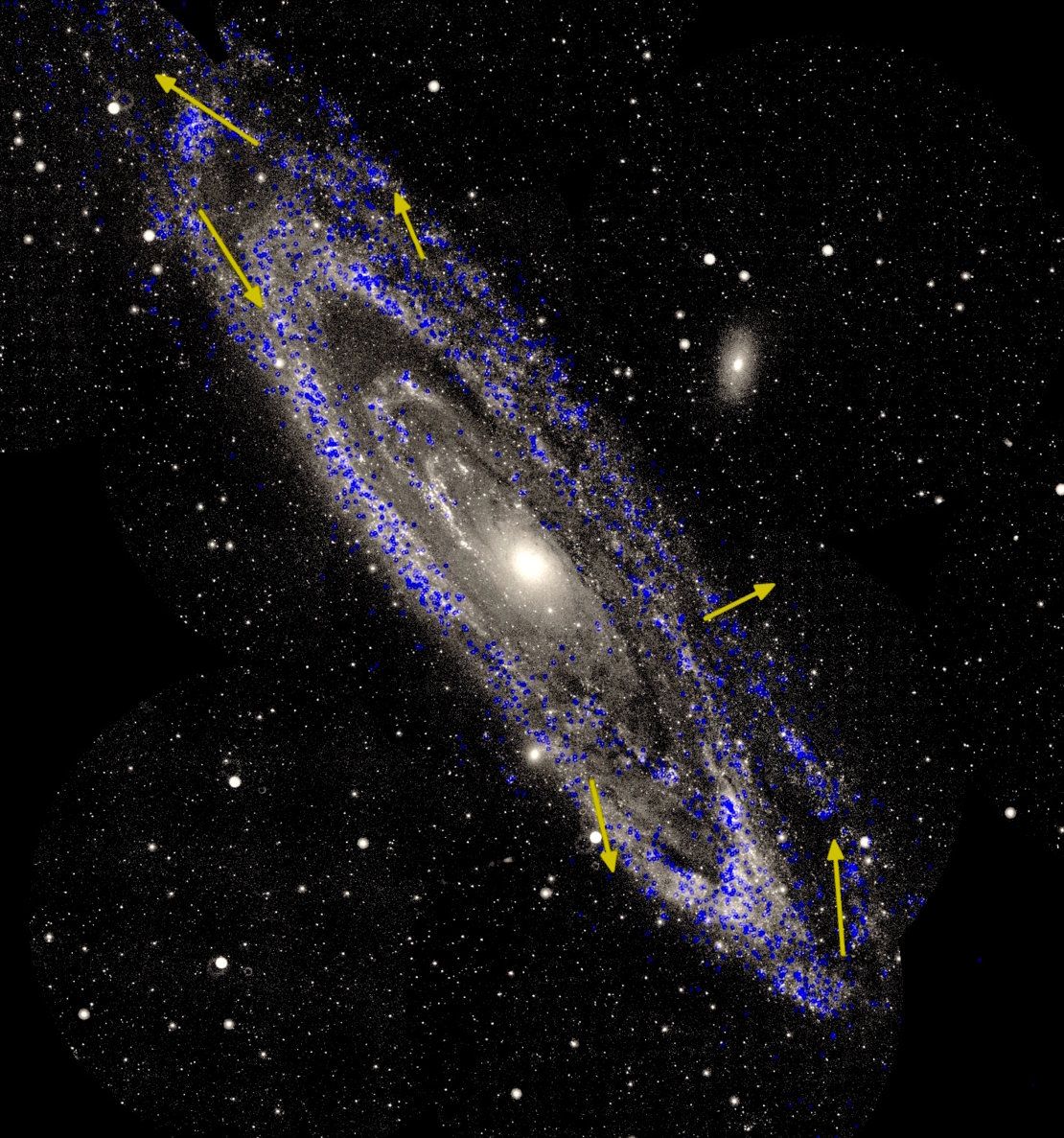1 day ago A barred galaxy like the Milky Way. Just left of center, extending about 1/5 of the way out, is a series of red ellipses marking the location of Heracles. The location of the Sun is marked about. The Milky Way is visible from Earth as a hazy band of white light, some 30° wide, arching the night sky. In night sky observing, although all the individual naked-eye stars in the entire sky are part of the Milky Way Galaxy, the term 'Milky Way' is limited to this band of light.
Like early explorers mapping the continents of our globe, astronomers are busy charting the spiral structure of our galaxy, the Milky Way. Using infrared images from NASA's Spitzer Space Telescope, scientists have discovered that the Milky Way's elegant spiral structure is dominated by just two arms wrapping off the ends of a central bar of stars. Previously, our galaxy was thought to possess four major arms.
The annotated artist's concept illustrates the new view of the Milky Way. The galaxy's two major arms (Scutum-Centaurus and Perseus) can be seen attached to the ends of a thick central bar, while the two now-demoted minor arms (Norma and Sagittarius) are less distinct and located between the major arms.
Milky Way And Surrounding Galaxies
Our Galaxy
The major arms consist of the highest densities of both young and old stars; the minor arms are primarily filled with gas and pockets of star-forming activity.
The artist's concept also includes a new spiral arm, called the 'Far-3 kiloparsec arm,' discovered via a radio-telescope survey of gas in the Milky Way. This arm is shorter than the two major arms and lies along the bar of the galaxy.
Our Sun lies near a small, partial arm called the Orion Arm, or Orion Spur, located between the Sagittarius and Perseus arms.


Artist impression of the warp of the Milky Way. Image Credit: Stefan Payne-Wardenaar; Magellanic Clouds: Robert Gendler/ESO CC BY 4.0
The Milky Way, like many spiral galaxies, is made of a thick central bulge and a large thin disk of stars. Recently we have learned that this thin disk is not flat, but warped. The latest observations suggest that the warp moves around the galaxy every 440 million years, a bit like a stadium wave. The new findings were presented at the 237th Meeting of the American Astronomical Society this week.
Milky Way Galaxy Position
The warp is believed to have been caused by the collision between the Milky Way and a smaller galaxy. Stars further away than the Sun go around the Milky Way every 225-250 million years and also move up and down the plane of the thin disk every 440 million years.
'Our usual picture of a spiral galaxy is as a flat disk, thinner than a pancake, peacefully rotating around its center,' said Xinlun Cheng of the University of Virginia, the lead author of the study, in a statement. 'But the reality is more complicated. Imagine that you are in the stands at a football game, and the crowd starts doing the wave. All you do is stand up and sit down, but the effect is that the wave goes all the way around the stadium. It’s the same with the Galactic Warp – stars only move up and down, but the wave travels all the way around the Galaxy.'
The study combined data on hundreds of thousands of stars from the Apache Point Observatory Galactic Evolution Experiment (APOGEE), part of the Sloan Digital Sky Survey (SDSS). The team uses the spectrum of light from each star as a way to recognize where that star is from. When this was combined with data from the European Space Agency’s Gaia observatory, the team had a much clearer idea of how the warp moves through the galaxy.
'The APOGEE spectra provide information about the chemical makeup and motions of individual stars,' added Dr Borja Anguiano of the University of Virginia. 'That allows us to separate them into different groups, which in turn allows us to follow the warp separately within each group of stars.'
This study has estimated the speed and the extent of the wave with more precision than ever before. For decades, it's been known that more than half of all spiral galaxies (possibly up to seven in 10) are warped. Studying the warp of the Milky Way is far from easy given that we are in it, but it is important to understand ours and other galaxies.

